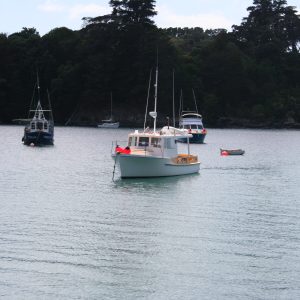A landmark survey of people who pot and dive for crayfish on the northeast coast between Pakiri and East Cape defies Ministry for Primary Industries’ assurances that the fishery is doing well. More than three quarters (78.6%) of the 822 survey respondents described the size and availability of crayfish in this popular fishery as 1 or 2 out of 7. Six per cent rated it as average, and only 2.2% described the fishery as above average.
Of those who took part, 83% supported or strongly supported a seasonal closure to all harvest to help the crayfish recover. Only 7% opposed or strongly opposed the move.

Some were willing to go even further, with 62% supporting or strongly supporting a total closure of the fishery for a fixed time, with a managed reintroduction of fishing once the fishery reopens. LegaSea spokesman Scott Macindoe says this conflicts with the Ministry for Primary Industries (MPI) view that all is well in the fishery.
“The acting director of fisheries management Steve Halley says our shellfish and finfish fisheries “are in good shape”.
We beg to differ.
“Our fisheries are not ‘in good shape’ and they’re being mismanaged by the Ministry that is supposed to oversee the future viability of our precious marine resources,” says LegaSea spokesman Scott Macindoe.
LegaSea is one of several recreational fishing groups concerned that not enough is being done to address ongoing depletion and excess commercial effort that sees hundreds of commercial craypots around popular islands such as Kawau and Great Barrier.Recreational divers have few chances to navigate their way through these pots and when they do, they struggle to find a
“Recreational divers have few chances to navigate their way through these pots and when they do, they struggle to find a legal sized crayfish to take home for that special occasion.”
Recreational fishers are concerned that statutory obligations to maintain the fishery at healthy levels are being ignored in favour of commercial interests whose ridiculously low catch rates (over 3 pot lifts required to catch a kilogram of crayfish on average) are only economically viable due to the premium prices available from live fish exports to China.

The Fisheries Act says the purpose of the Act is “to maintain the potential of fisheries resources to meet the reasonably foreseeable needs of future generations”, yet the lack of crayfish in this once- abundant fishery is not being addressed by the Ministry.
“MPI talks of industry voluntarily reducing its catch by 25%. In fact, commercial fishers can’t take that many crayfish and haven’t been able to for some time. Of course they are not going to talk about the public allowance being impossible to catch. It’s all becoming a farce.”
LegaSea calls for an independent inquiry into the way MPI is overseeing the industry, the Quota Management System and the future of New Zealand’s fisheries before it is too late.
Independent scientists have already described crayfish as “functionally extinct” in the Hauraki Gulf because their numbers are so low they cannot perform their normal ecological function.
“This is a damning indictment of the management of our fisheries. We want to make sure this doesn’t happen to other species in New Zealand waters and an independent inquiry is the only way to achieve that goal”, says Macindoe.





